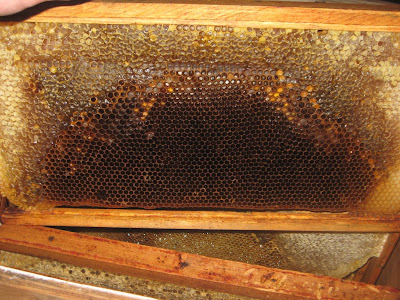Pete Nicholson
House Bee
- Joined
- Jan 20, 2011
- Messages
- 237
- Reaction score
- 5
- Location
- devon
- Hive Type
- National
- Number of Hives
- 2
Hi all - went into the winter with brood box on top of super (with xs stores to keep them happy) as have been advised by this forum.
NOW the question that arises is how and when should I go for change and SHOULD I change?
Reasoning behind this is brood always goes to the top as it is the warmest place so it follows logically that if I were to continue a brood and a half I should not disturb my bees and leave the super on the bottom to let them (the queen) expand if they need to. So why in all the books I read do they say ADD a super on TOP of the brood box. I'm confused and any advice accepted tho I am sure I will get conflicting replies.
Have not done any inspections yet as too early but each of my two hives has gained 1kg in the last fortnight and yesterday they were buzzin and bringing in lots of golden (crocus/snowdrop pollen?) so I'm assuming there is brood being produced. It is a most unusual start to the year and I am sure we are in for a few surprises temperature wise.
So I keep watching and learning hopefully.
P.
NOW the question that arises is how and when should I go for change and SHOULD I change?
Reasoning behind this is brood always goes to the top as it is the warmest place so it follows logically that if I were to continue a brood and a half I should not disturb my bees and leave the super on the bottom to let them (the queen) expand if they need to. So why in all the books I read do they say ADD a super on TOP of the brood box. I'm confused and any advice accepted tho I am sure I will get conflicting replies.
Have not done any inspections yet as too early but each of my two hives has gained 1kg in the last fortnight and yesterday they were buzzin and bringing in lots of golden (crocus/snowdrop pollen?) so I'm assuming there is brood being produced. It is a most unusual start to the year and I am sure we are in for a few surprises temperature wise.
So I keep watching and learning hopefully.
P.




